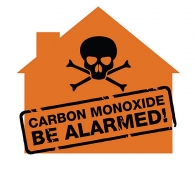News & Notices
POSTED | January 6, 2014 - M Broek
Carbon Monoxide Safety
Keep You & Your Family Safe This Winter
 Many Canadians are exposed to the deadly effects of Carbon Monoxide each year in their own homes. Hundreds are hospitalized each year with Carbon monoxide poisoning, which often can lead to permanent disability.
Many Canadians are exposed to the deadly effects of Carbon Monoxide each year in their own homes. Hundreds are hospitalized each year with Carbon monoxide poisoning, which often can lead to permanent disability.
 Many Canadians are exposed to the deadly effects of Carbon Monoxide each year in their own homes. Hundreds are hospitalized each year with Carbon monoxide poisoning, which often can lead to permanent disability.
Many Canadians are exposed to the deadly effects of Carbon Monoxide each year in their own homes. Hundreds are hospitalized each year with Carbon monoxide poisoning, which often can lead to permanent disability.
88% of all homes have something that poses a Carbon Monoxide threat, so taking steps to protect yourself and your family is key to avoiding and/ or identifying leaks.
Where does Carbon Monoxide Come From?
- Wood
- Propane
- Natural Gas
- Heating Oil
- coal
- Kerosene
- Charcoal
- Gasoline
What Are The Main Sources of Carbon Monoxide in my Home?
Wood burning/gas stoves, gas refrigerators, gasoline engines, kerosene heaters and others.
How Can I Tell if There is a Carbon Monoxide Leak in my Home?
- Personally
- Headache, nausea, burning eyes, fainting, confusion, drowsiness
- Often mistaken for common ailments like the flu
- Symptoms improve when away from the home for a period of time
- Symptoms experienced by more than one member of the household
- Continued exposure to higher levels may result in unconscious, brain damage, and death
- The elderly, children and people with heart or respiratory conditions may be particularly sensitive to carbon monoxide.
- Excessive moisture on windows or walls
- Sharp penetrating odor or smell of gas when furnace or other fuel burning appliance turns on
- Burning and pilot light flames are yellow/orange, not blue
- Pilot light on the furnace or water heater goes out
- Chalky white powder or soot build up occurs around exhaust vent or chimney
How Can I Protect Myself and my Family?
- Regularly maintained appliances that are properly ventilated should not produce hazardous levels of carbon monoxide
- Have a qualified service professional inspect your fuel burning appliance (s) at least once per year
- Have your chimney inspected and cleaned every year by a W.E.T.T. certified professional
- Be sure your carbon monoxide detector has been certified by the Canadian Standard Association (CSA)
- Install a carbon monoxide detector in or near the sleeping area of the home
- Install the carbon monoxide detector (s) in accordance with the manufacturer's instructions.
What Should I Do if my Carbon Monoxide Detector Starts Beeping?
Always react to a carbon monoxide detector that has alarmed!
To keep safe please remember:
Your knowledge of the dangers of carbon monoxide may help to save the life of a loved one in the event of a leak. Having a detector in your home is a good second line of defense, but proper care and maintenance of fuel burning appliances should always be a priority.
Where To Install A Carbon Monoxide Detector
Since carbon monoxide moves freely in the air, the suggested location is in or as near as possible to sleeping areas of the home. The human body is most vulnerable to the effects of carbon monoxide during sleeping hours. to work properly the unit must not be blocked by furniture or draperies. Carbon Monoxide is virtually the same weight as air and therefore the alarm protect you in a high or low location. for maximum protection, a carbon monoxide detector should be located outside primary sleeping areas or in each level of your home.
Where NOT to Install a CO Detector
Some locations may interfere with the proper operation of the alarm and may cause false alarms or trouble signals. CO detectors should not be installed int he following locations:
- Where the temperature may drop below 4.4 C (40 F) or exceed 37 C (100F)
- Near paint thinner fumes or household cleaning products. Ensure proper ventilation when using these types of chemicals.
- Within 1.5 M (5 feet) of any cooking or open flame appliances such as furnaces, stoves, and fireplaces.
- In exhaust streams from gas engines, vents, flues, or chimneys.
- Do not place in close proximity to an auto mobile exhaust pipe; this will damage the detector.
Test your carbon monoxide detector regularly to make sure it is operating properly. The owner's manual should tell you how to test your alarm. Remember to check the manual for information on when to buy a new carbon monoxide detector.







